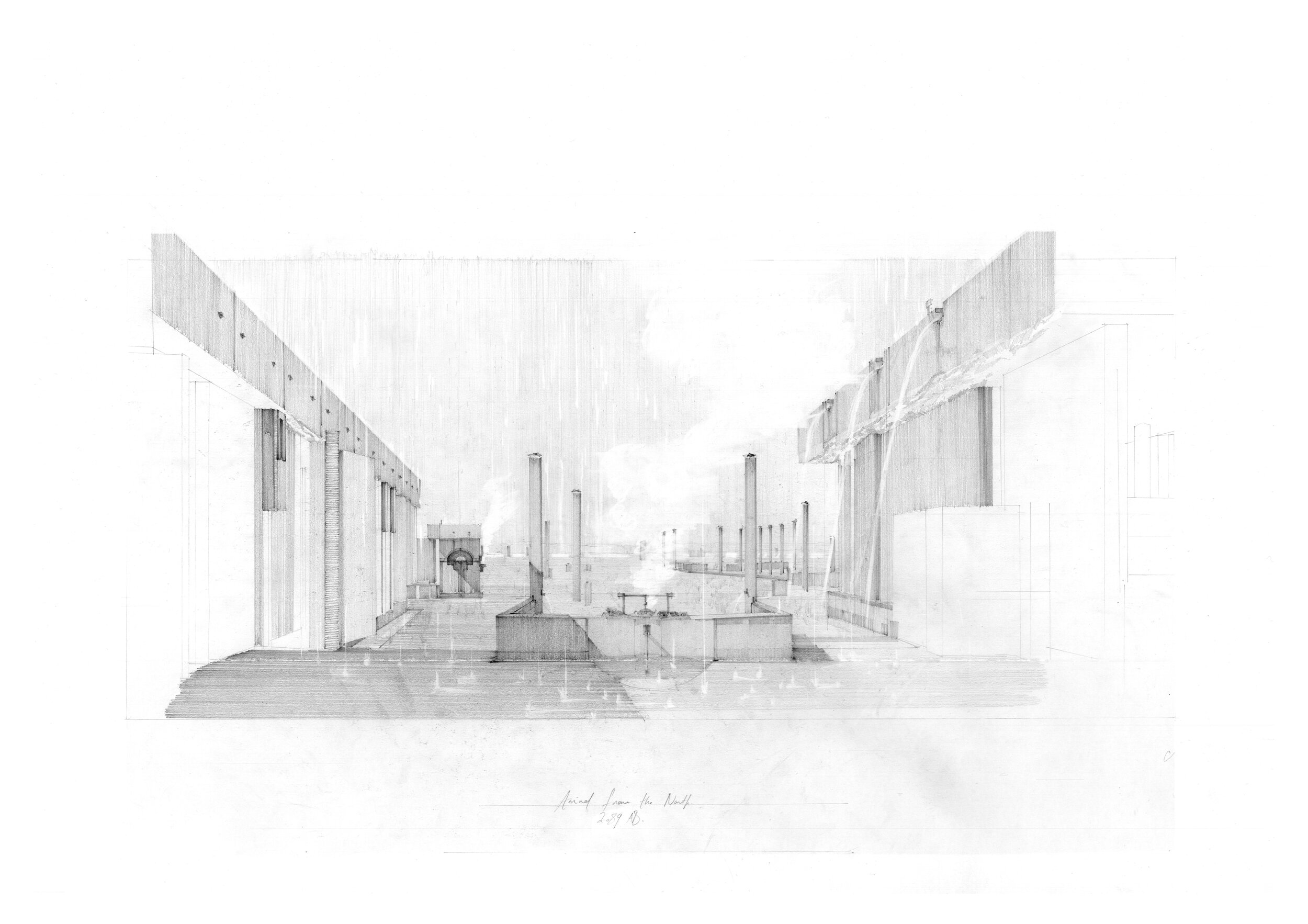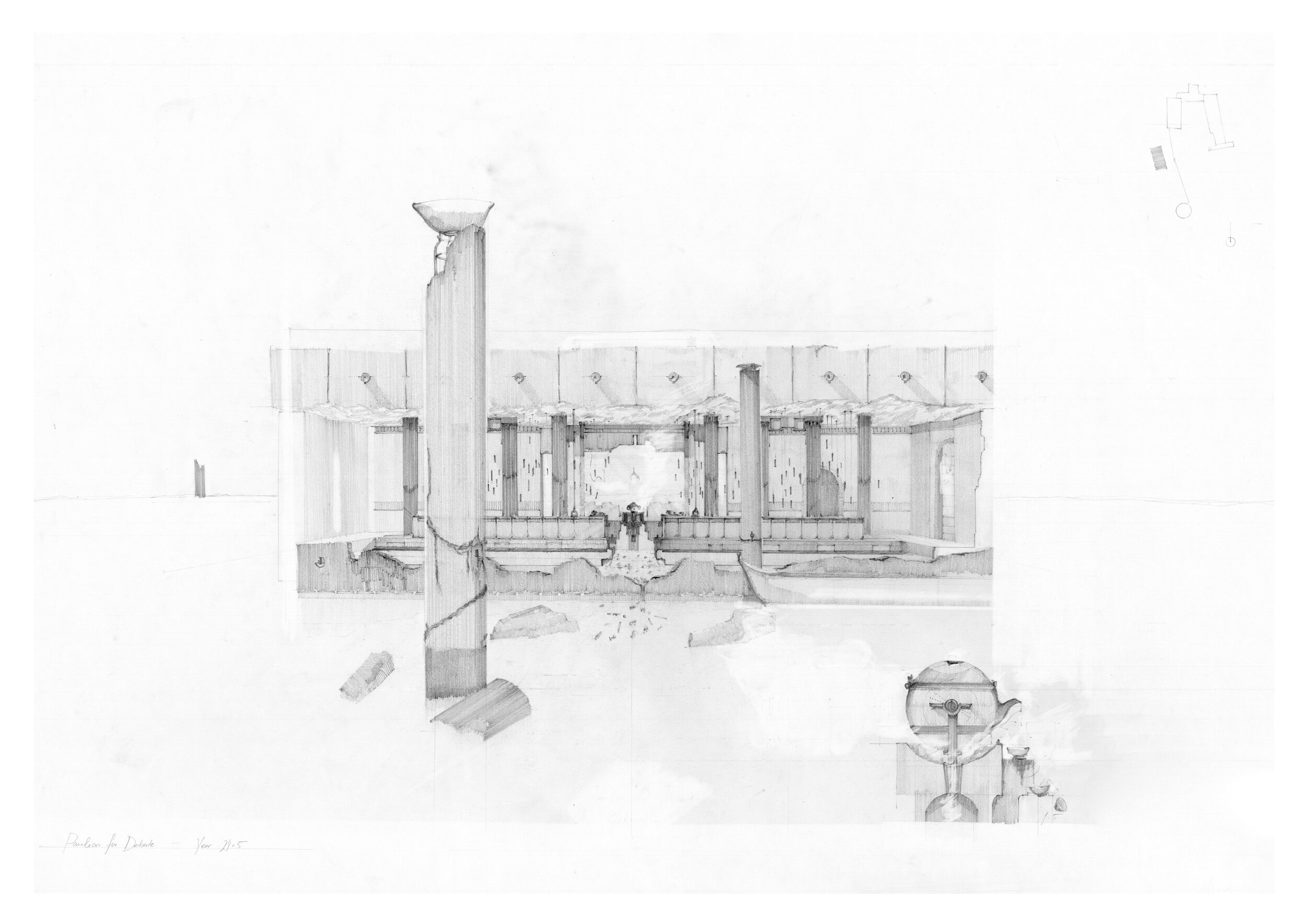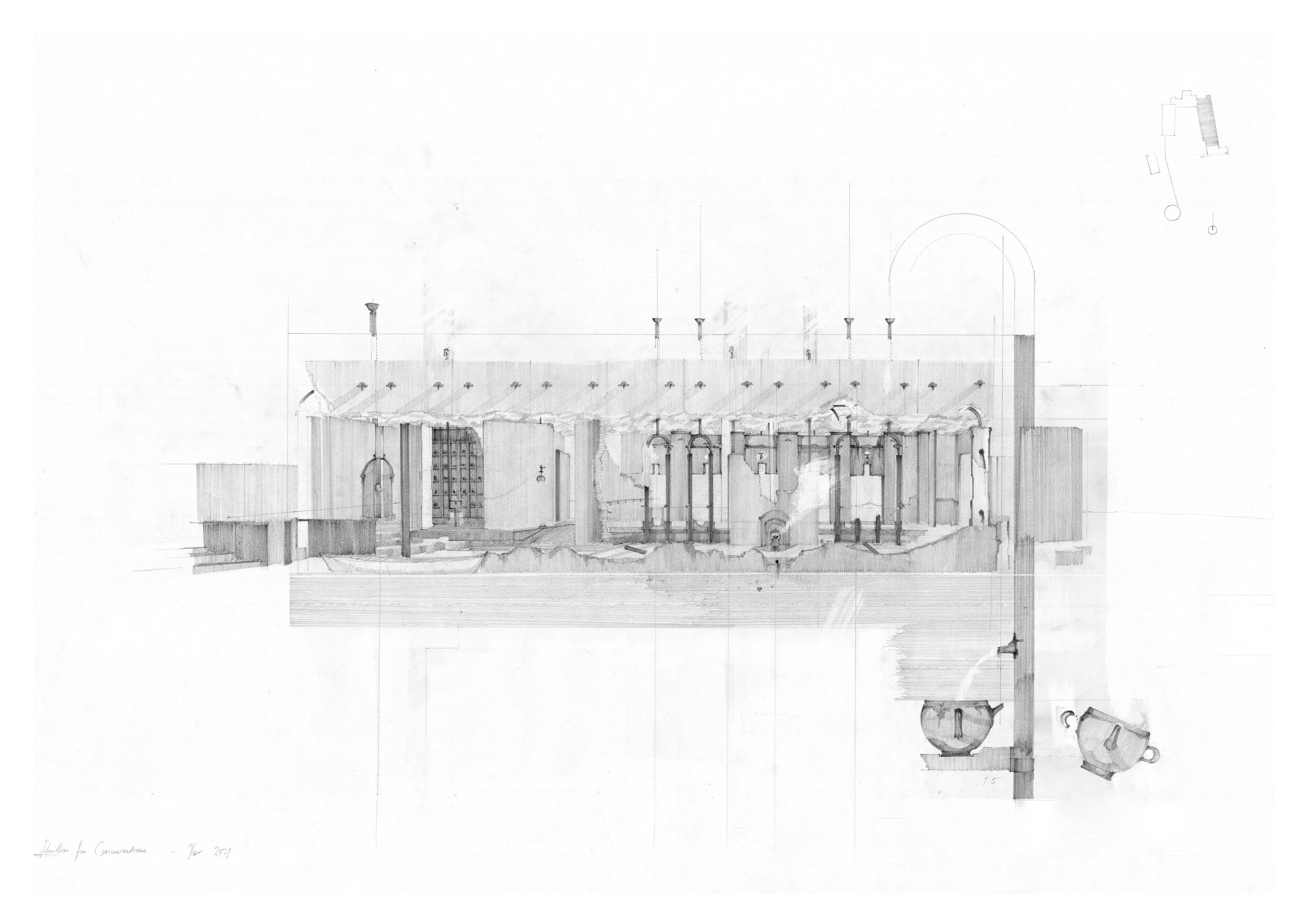‘Pavilions for Conversations’
Graphite on paper. 2019.
The Drawing was awarded
“1st Prize Recipient of the Drawing of the Year 2020” from the Aarhus School of Architecture.
‘It was a crisp winter morning, when I set out by boat on the flooded plains. I had never made the journey myself, and there was no map to guide me. I relied on stories I had gathered over the years: hearsay and tales of this wondrous place in the middle of the plains. The mist did not make it any easier. Looking for any landmarks in the distance, I found a trail of blackened smoke, which I assumed came from the ruins. The faint smell of firewood burning pervaded the air. With my compass set, I paddled my way to the source of the smoke. Through the thickened mist, a shape began to emerge… then two… then three. There they were the ruins.
Slowly gliding through the calm water, I pushed my boat away from any stones that have broken away from the big flood. Over the decades, the water had subsided, letting ivy to grow long, hiding the sandstone beneath it. I made my around around, where I finally found the source of the smoke. By the time I got there, the fire was but a kindling, and an empty tea cup was left on the stone bench. I figured I had just missed this person, as the tea had just gone cold.
My grandparents used to tell me stories of this place. Stories they once told my mother when she was young. Now that the great deluge has passed and the storms have calmed, I could finally see them for myself. In the past, people from across the land gathered here, to listen, to talk, to have a conversation. Grand speeches, inspired discourses, reasoned debates happened… all around a cup of tea. Many came here just to listen, others came to discuss recent happenings. Now, they lay bare, at the mercy of the elements. But, they still stand.
Looking for a place to dock, I entered what was once the main courtyard. Slowly rowing through, I passed the Amphitheater, the Pavilion for Debate, then the Pavilion for Conversation. I managed to discern each one, piecing together clues that I had heard from stories as a child. Most of the walls had crumbled away, but the sandstone purifying roof and golden chalice columns had withstood the cataclysm. According to the stories, when it rained, the water would collect on the stone roof, which, once filtered through, would then become used as the ceremonial tea that was drunk here. Judging by the number of tea cups sprawled around the Pavilions, a rare few still come here. Perhaps they too heard stories from their ancestors.
Close enough to reach the limestone steps, I docked my boat and carefully stepped onto stone. Moss and algae had grown making the surface slippery. Holding onto the stone ledge, I pulled myself up. It was the first time I stood on solid ground. Now, standing on the ceremonial stand. I looked back onto the main courtyard where I arrived from.Still water stretched endlessly, merging with the horizon. It had been years since one last saw the luscious green glow of grass which ran thorough these plains… I myself had never seen it. Rain started pouring down, and I could not help but look up at the sky. I closed my eyes, imagining the past, when the pitter-patter of raindrops, the sipping of tea, and voices brought life to this place.
I felt at peace here.
-A lone adventurer (2104 A.D.)





